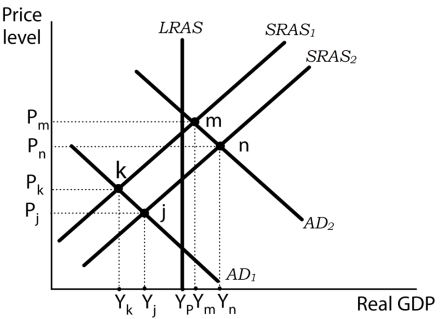Use the following to answer questions .
Exhibit: Aggregate Demand and Aggregate Supply and the Great Depression 
-(Exhibit: Aggregate Demand and Aggregate Supply and the Great Depression) During the Great Depression, aggregate demand declined sharply. Suppose the economy moved to a short-run equilibrium at point k. Over time, the economy moved to point j. What could have caused the economy to move to point j?
A) Falling output prices caused the aggregate supply to shift from SRAS1 to SRAS2.
B) Falling nominal wages caused the aggregate supply to shift from SRAS1 to SRAS2.
C) Expansionary fiscal policies caused the aggregate supply to shift from SRAS1 to SRAS2.
D) A decline in the demand for U.S. goods by foreign countries aggregate supply to shift from SRAS1 to SRAS2.
Correct Answer:
Verified
Q35: Use the following to answer questions .
Exhibit:
Q36: The Smoot-Hawley Tariff Act of 1930
A) was
Q37: In the initial stages of the Great
Q38: Which of the following statements is true
Q39: Use the following to answer questions .
Exhibit:
Q41: Which of the following are reasons why
Q42: Writing in 1752, David Hume's essay, "Of
Q43: In 1963, President Kennedy proposed a tax
Q44: In the 1970s, the U.S. economy experienced
Q45: The monetarists school of economics believes that
Unlock this Answer For Free Now!
View this answer and more for free by performing one of the following actions

Scan the QR code to install the App and get 2 free unlocks

Unlock quizzes for free by uploading documents